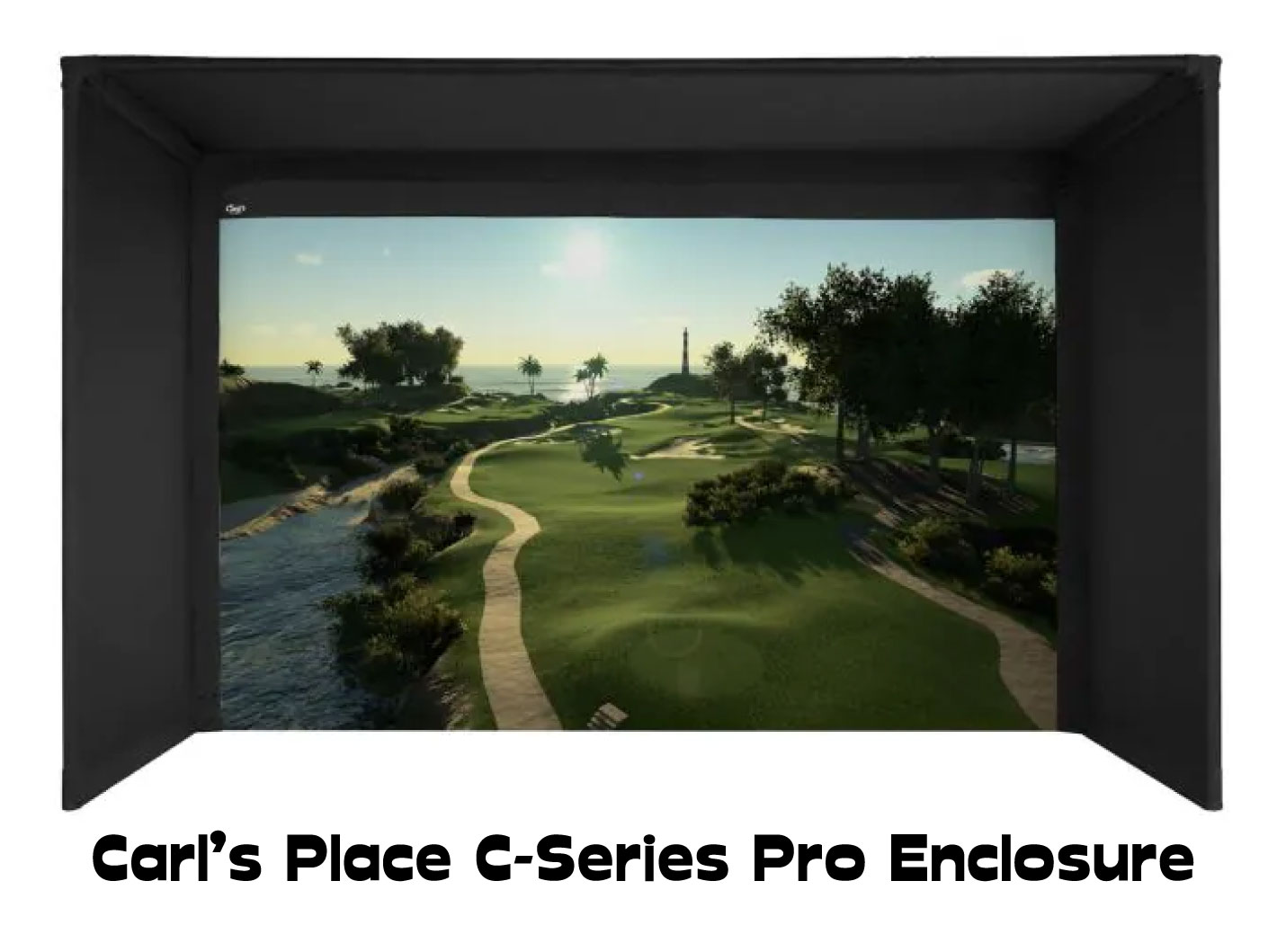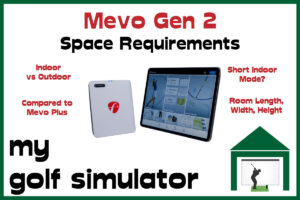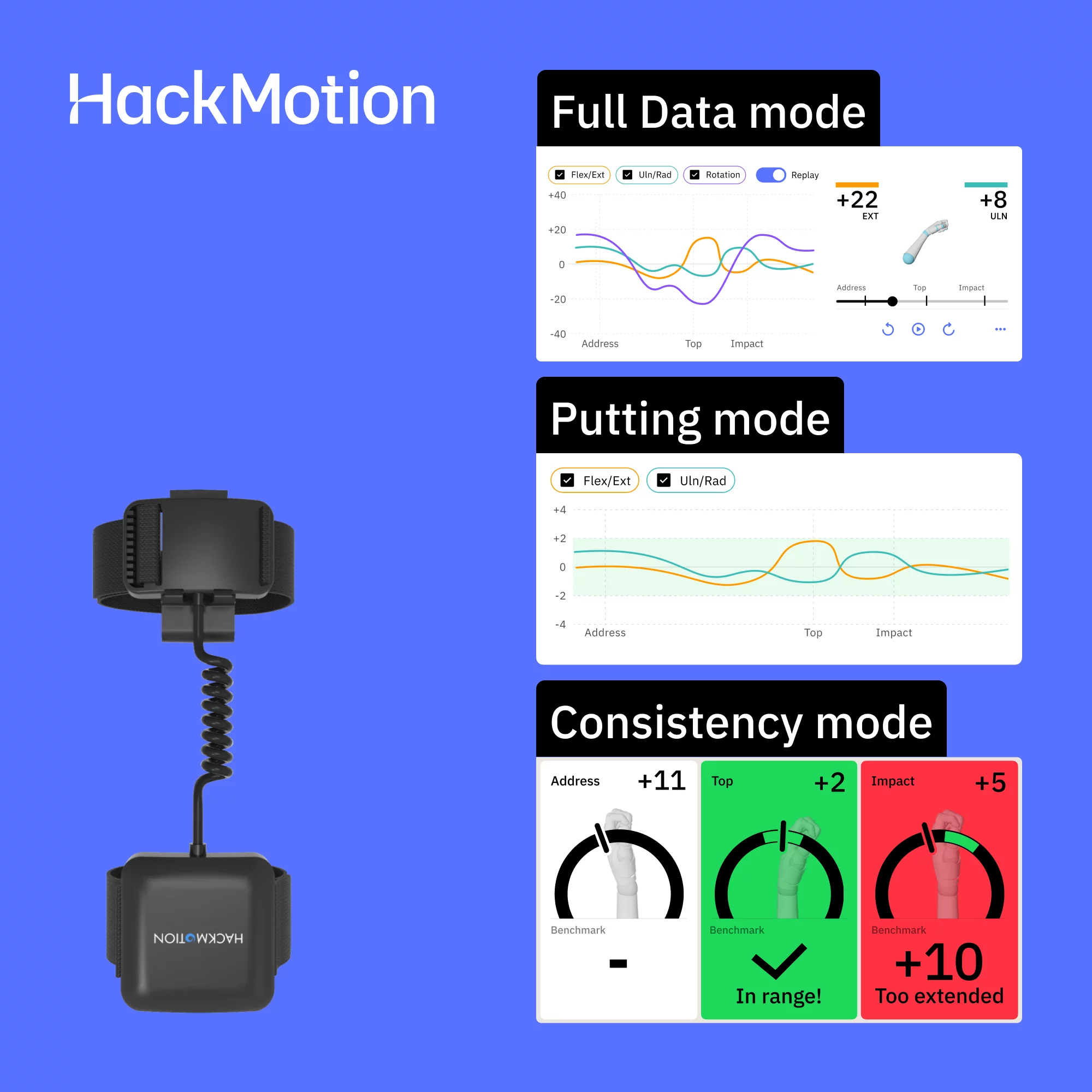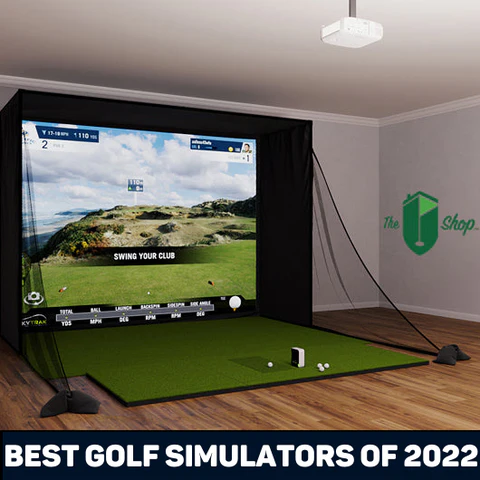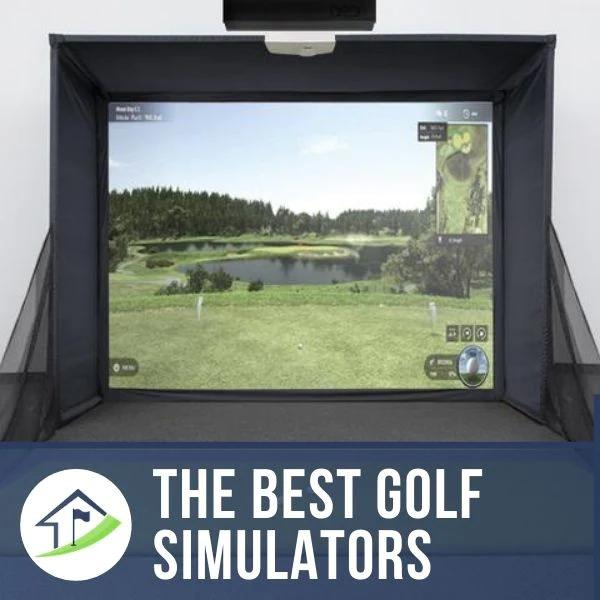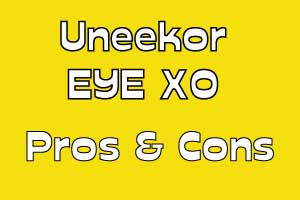Golf Simulator Projector Lumens – How many do you need? (2025 Update)
Posted in Projectors
How bright does a golf simulator projector need to be? The answer depends on your room, screen, and projector type—but brightness is critical for image clarity.
Today’s golf simulator setups typically require 3,000–4,000 ANSI lumens as a baseline, with many modern short-throw LED and laser projectors delivering even higher brightness levels. Larger screens or brighter spaces may demand 4,000–5,500 lumens to maintain image quality.
In this guide, we’ll break down exactly how many lumens you need, how ambient light and screen size affect brightness, and why modern laser and LED projectors make your simulator look sharper than ever.

What Are Lumens?
Lumens measure brightness—the higher the lumen rating, the brighter the image on your golf simulator screen. How many you need depends on your room’s lighting, screen size, and projector type.
While the strict scientific definition of a lumen involves luminous flux (light energy per second), all you really need to know is that more lumens = more visible brightness for your simulator setup.
What Are ANSI Lumens?
Not all lumen ratings are equal. ANSI lumens are the industry standard for projectors because they are tested using a consistent method developed by the American National Standards Institute.
During this test:
- Brightness is measured at nine points across the image.
- Results are averaged to account for screen size and uniformity.
- The outcome is a reliable brightness rating that allows fair comparison between projectors.
In practice, ANSI lumens give you a trustworthy measure of how bright your projector will appear. For golf simulators, always look for ANSI lumen ratings rather than generic or marketing terms.
Does the projector light source matter?
Does the Projector Light Source Matter?
Yes—your projector’s light source makes a big difference in lifespan, brightness, and overall performance.
For many years, lamp-based projectors were the standard for golf simulators. They work well, but require bulb replacements every 3,000–10,000 hours, adding long-term cost and downtime.
In recent years, the market has shifted rapidly toward LED and laser projectors:
- LED projectors now offer 20,000+ hours of life, excellent color saturation, and minimal maintenance. They often appear brighter than their lumen rating suggests. However, avoid no-name budget imports with exaggerated specs, as contrast and accuracy can be poor.
- Laser projectors have become the new benchmark. Once only for high-end commercial installs, they are now widely available under $2,000–$3,000. They deliver 30,000–50,000 hours of use, superior brightness, and highly accurate color reproduction.
- Both LED and laser models now compete directly with lamps on upfront price while offering far lower total cost of ownership.

In 2025, most recommended golf simulator projectors are LED or laser-based, with lamp projectors quickly being phased out. While lamp models can still be a budget option, LED and laser technology provide the best balance of longevity, brightness, and visual quality for nearly all setups.
Do you plan on there being windows or natural light coming into your simulator room?
So, to choose how many ANSI lumens you need, you need to answer a series of questions. The first being about the room in which you’re setting up your golf simulator.
Are there windows? Are there skylights?
If there is no natural light coming in, how bright are the artificial lights that you plan on having on when you use your simulator?
The brighter your room, the more lumens your projector will need, to show an image of comparable brightness.
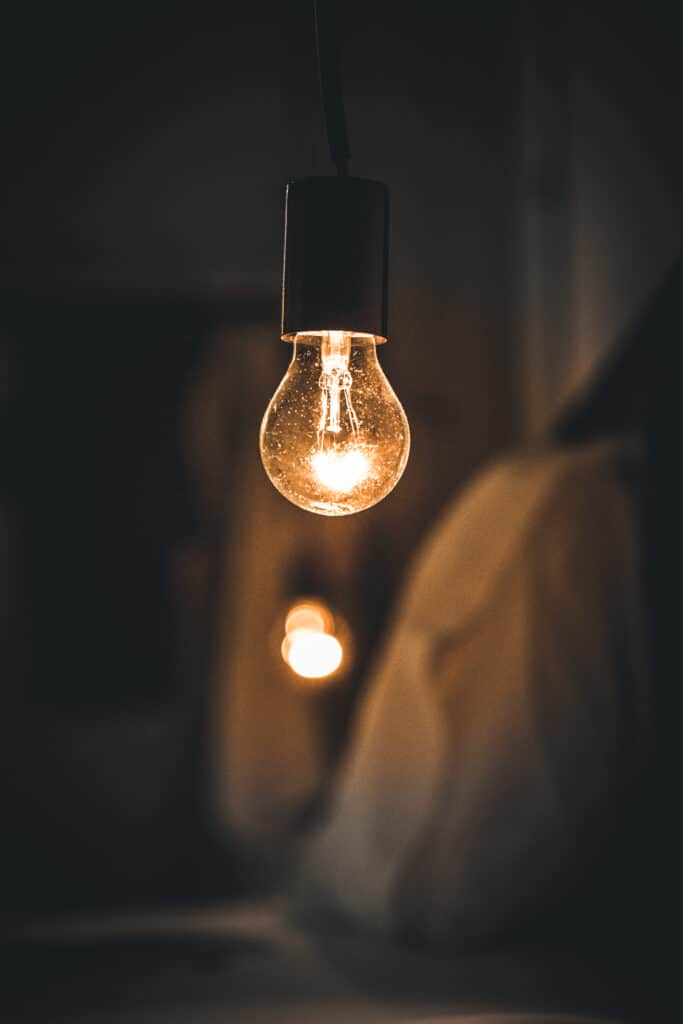
Will you be using blackout fabric around your simulator?
Using a blackout curtain around the portion of your enclosure closest to your screen can help decrease the unwanted ambient light falling on your screen and obscuring your image. This is a cheap addition to a golf simulator.
In my very first setup, years ago, I bought a roll of black fabric measuring 1.5m x 10m for around £35 and draped it around my enclosure, pulled it taught and tied it in place. This improved my screen brightness dramatically.
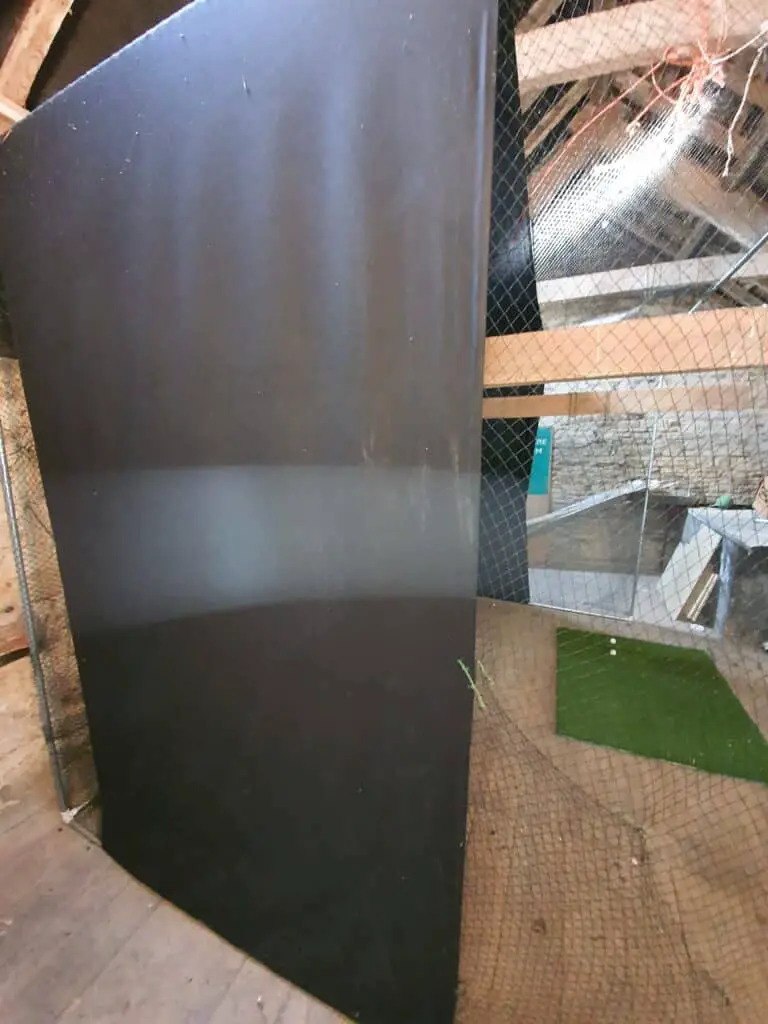
Will you be using Your Simulator for Movies and Games?
If you plan to use your golf simulator for movies or gaming, brightness and image quality become even more important. A dim projector will quickly ruin the cinematic feel.
- Brighter is better: Aim for 3,000–4,000+ ANSI lumens for mixed use, especially if you’ll have any ambient light in the room. Larger screens or less controlled lighting may push you toward 4,000–5,500 lumens.
- Balance matters: Don’t chase raw brightness alone. A strong contrast ratio, accurate color reproduction, and a quality impact screen will make movies and games look far more vibrant than brightness alone.
- Avoid overspending on extremes: While outdoor projectors may push 6,000–7,000 lumens, you rarely need that indoors. Most home golf simulator setups perform best in the 3,000–5,000 lumen range.
⚠️ Pro tip: Remember that golf simulator software itself is demanding—so don’t spend your whole budget on a high-brightness projector only to discover your PC can’t keep up.
Today, many modern short-throw LED and laser projectors in the $1,500–3,000 range strike the perfect balance between gaming, movies, and golf simulation, offering brightness, longevity, and immersive image quality.
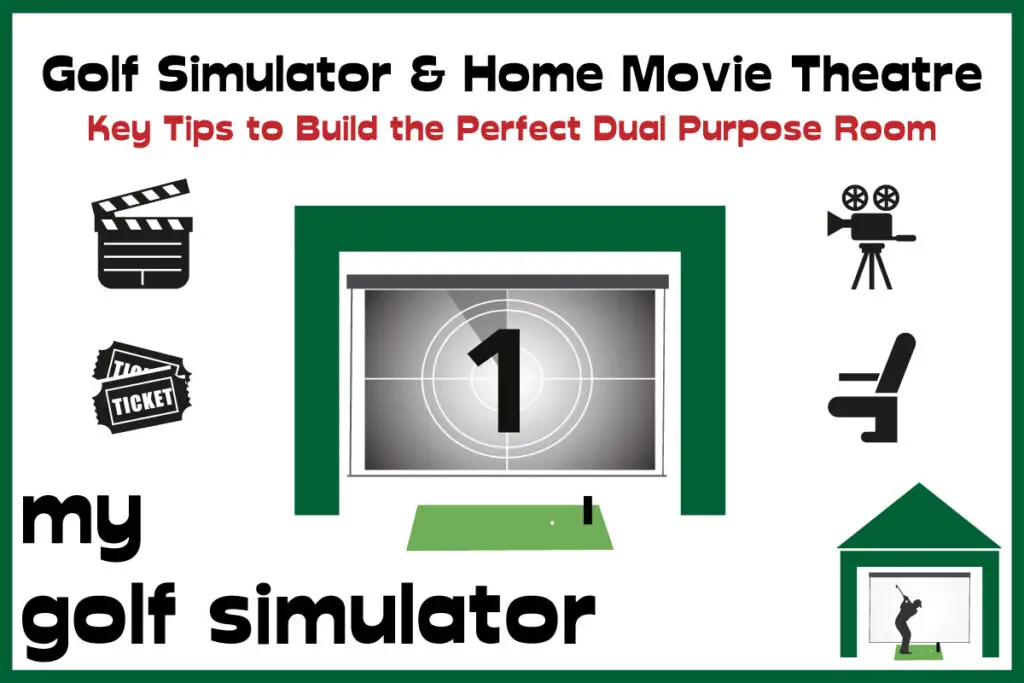
Does Extra Brightness Mean Compromising on Other Features?
Sometimes, yes. Chasing the highest lumen rating isn’t always the smartest move—especially if it comes at the expense of other features that matter in a golf simulator.
Before buying, make a list of your must-have criteria:
- Room setup & enclosure: Plan your space and light control first. The right enclosure can reduce the need for excessive brightness.
- Throw ratio & keystone correction: Essential for fitting the image properly in compact simulator spaces.
- Aspect ratio & resolution: Most golf sim screens are 4:3, but many projectors are native 16:9/16:10. Matching these properly affects brightness and clarity.
- Contrast ratio & color accuracy: Higher contrast and Rec.709 color accuracy (92–95% now common) make a huge difference to realism.
In 2025, many LED and laser projectors deliver both 3,000–5,000 ANSI lumens and cinema-grade image quality. The key is to balance brightness with overall performance, rather than maxing out lumens alone.
How Has This Topic Changed Over Recent Years?
Projector brightness standards for golf simulators have evolved quickly in the past few years:
- Shift from Lamps to LED & Laser: Lamp projectors once dominated, but LED and laser models are now standard, with far longer lifespans (20,000–50,000 hours) and lower maintenance.
- Higher Brightness Expectations: In 2020, 2,200–3,000 lumens was often “enough.” Today, most setups call for 3,000–4,000+ ANSI lumens, and many users choose 4,500–5,500 for larger screens or brighter rooms.
- Falling Prices for Premium Tech: True 4K short-throw projectors, once prohibitively expensive, now sell for under $2,000, making high resolution and brightness accessible to home users.
- Improved Color Accuracy: High-brightness projectors used to compromise on color. Now, 92–95% Rec.709 accuracy is common even at 4,000+ lumens.
- Smart Features: Auto-setup, keystone correction, and even golf-specific display modes are increasingly built-in, reducing setup complexity.
In short: What was once a niche setup with expensive, high-maintenance projectors is now a mainstream home upgrade. The expectation in 2025 is a laser or LED short-throw projector with 3,000–5,000 lumens, sharp resolution, and plug-and-play usability.
Conclusion: Choosing the Right Brightness for Your Setup
By now, you should have a clear understanding of what ANSI lumens mean and how projector brightness impacts your golf simulator experience. In short:
- 3,000–4,000 ANSI lumens is the baseline for most indoor golf simulators.
- 4,000–5,500+ lumens may be needed for larger screens or bright garages.
- Light source matters—LED and laser projectors now dominate, offering longer life, lower running costs, and better color accuracy than lamps.
What Are Your Next Steps?
- Compare Projectors – Check out our Golf Simulator Projector Comparison Table with the latest short-throw LED and laser projectors ranging from 3,000 to 5,500+ ANSI lumens.
- Prioritize Features Beyond Brightness – Resolution, throw ratio, contrast ratio, and color accuracy are just as important as lumens.
- Upgrade Your Screen – A premium impact screen can make a huge difference in picture quality, sometimes more than extra lumens.
👉 If you’re ready to shop, we’ve rounded up some of the best projectors for 2025 golf simulators, including budget-friendly LED models and premium 4K laser options.
Golf Simulator Projector Lumens: FAQs
❓ How many lumens do I really need for a golf simulator?
Most setups need 3,000–4,000 ANSI lumens. Larger screens or bright garages may require 4,000–5,500+ lumens, while dark, dedicated rooms can get by with 2,000–2,500 lumens.
❓ What’s the difference between lumens and ANSI lumens?
Lumens measure brightness, but ANSI lumens are tested using a standard method that averages brightness at nine points on the screen. Always choose projectors rated in ANSI lumens for reliable comparisons.
❓ Do LED and laser projectors need fewer lumens than lamp projectors?
Often yes. LED and laser light sources produce richer colors and appear brighter than a lamp-based projector with the same lumen rating. This means a 3,000-lumen laser projector can outperform a 3,000-lumen lamp model.
❓ Is it possible to have too many lumens?
Not really indoors. Extra brightness won’t harm your setup—it just costs more. However, don’t overspend on extreme lumen ratings if your room is already dark and well controlled. Instead, invest in contrast ratio and screen quality.
❓ How does screen size affect lumen requirements?
Bigger screens need more brightness. As a rule, doubling your screen area requires nearly double the lumens to maintain the same image quality.
❓ Do I need a 5,000+ lumen projector for a home golf simulator?
Only if you’re in a bright garage, basement with windows, or using a 12+ foot screen. For most home users, 3,000–4,000 lumens from a modern short-throw laser or LED projector is ideal.
❓ Will blackout curtains help reduce the lumen requirement?
Absolutely. Controlling ambient light with curtains, enclosures, or side panels can make a 3,000–3,500 lumen projector perform like a 4,500 lumen one in a brighter room.
Mevo Gen 2 Space Requirements
Gray Impact Screens – Pros and Cons
ABOUT THE AUTHOR
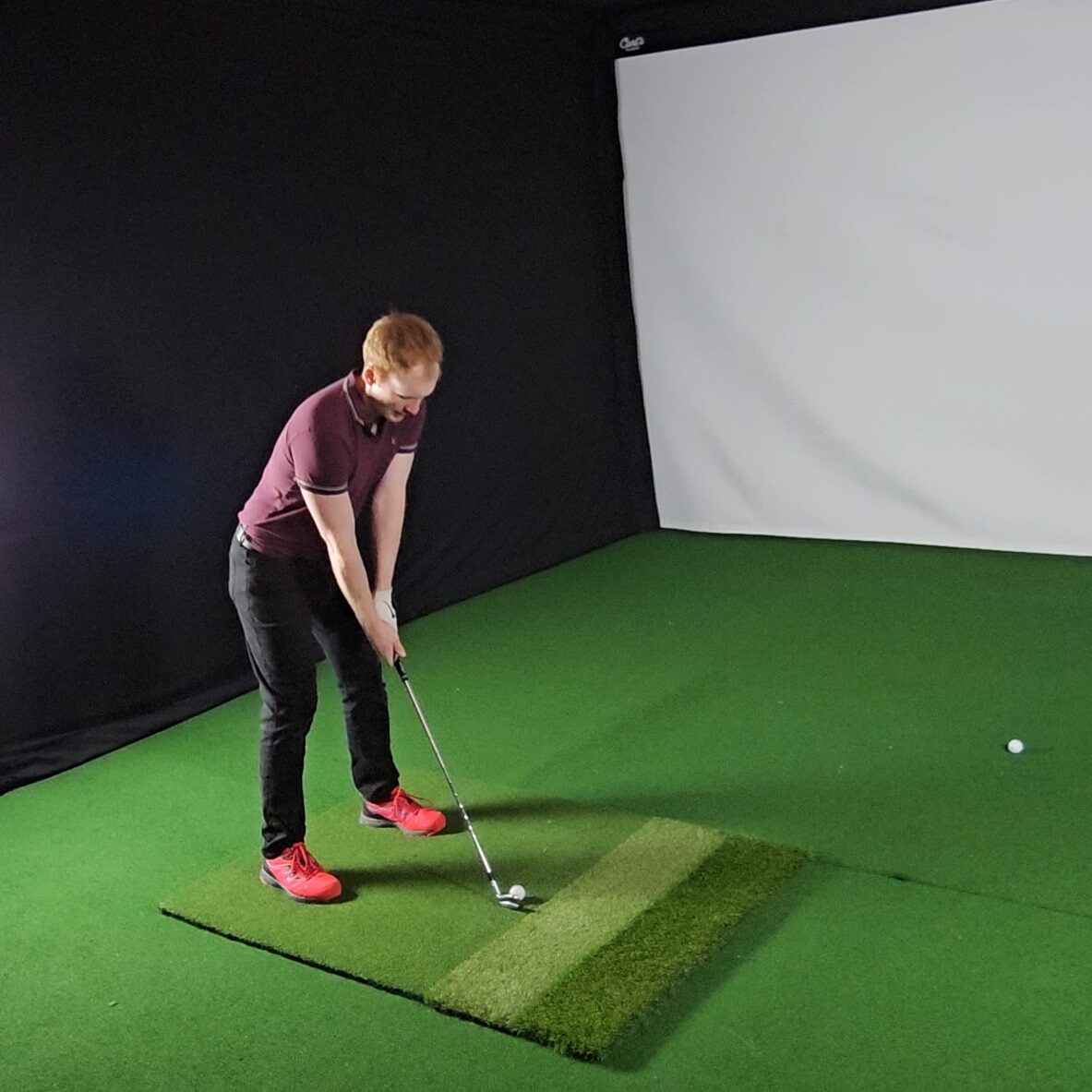
Hello! My name is Alex and it is my mission to bring you all the information you need to build your own home golf simulator! I hope mygolfsimulator.com helps you on your journey to better golf at home!
LEGAL INFORMATION
On this site, you'll find articles on all aspects of building a golf simulator. I will also link to other sites where you can buy some of the simulator components. Some of these links may be affiliate links, which means if you click them I gain a small commission at no extra cost to you. This really helps out me and my site so thank you in advance! mygolfsimulator.com and all related social media accounts are property of Awonline LTD.
